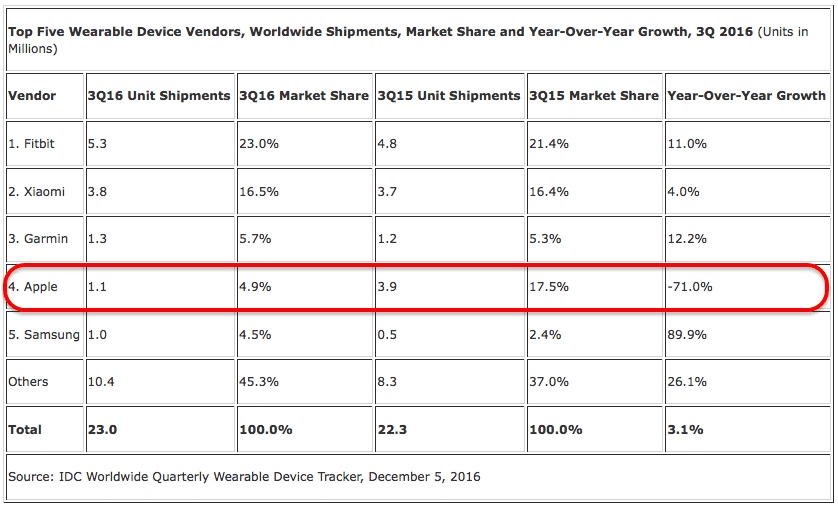
The global market for wearable or wearable devices continues to offer an interesting growth that reaches double digits and that undoubtedly alienates fears of a saturated sector that, after an initial boom, seemed to be doomed to failure. Nevertheless, there are wearables and wearablesIn other words, this sector of the industry is clearly and evidently divided into two clearly differentiated segments both in terms of performance and price, user interest and success.
We are talking about basic wearables on the one hand, quantifying bracelets such as Xiaomi Mi Band or Fitbit's Charge 2, focused on health and physical activity and at affordable prices, and smart watches or smartwatches, whose functions are no longer so exclusive and whose prices are too high for most consumers.
Basic wearables take over the industry's 'supreme reign'
And in the midst of this panorama, although the Apple Watch continues to be the best-selling smartwatch in the world, during the last year it has lost more than two-thirds of the market share of wearable devices (including basic and smartwatches). This is confirmed by the data revealed by the latest report prepared by the market research firm IDC, which also highlights the undisputed supremacy of basic wearables, which qualifies as "supreme reign."
The main conclusion that can be reached after the publication of this report is that consumers show their preference for simple, straightforward devices, focused on health and physical exercise which, in addition, are much cheaper than the Apple watch and other smart watches from other firms.
En este sentido, basic wearable devices represented 85% of the sector's sales during the third quarter of 2016, which represents a double-digit growth compared to the same period of the previous year, according to IDC.

At the top of wearable devices, Fitbit stands and maintains, from which nobody manages, at the moment, to snatch a leadership that already reaches 23%, compared to 21,4% a year ago. Much of the blame for this growth has been one of its latest launches, the Fitbit Charge 2. In absolute numbers, Fitbit shipped around 5,3 million wearables in the quarter.
Xiaomi has been in second place, a position that IDC attributes to the low cost of its Mi Band, much lower than similar devices offered by other firms. Even so, Xiaomi's market share has remained practically unchanged since it has gone from 16,4% of market share of a year ago to 16.5% of current market share and around 3,8 million units shipped in the analyzed quarter.
The third position is for Garmin, with 1,3 million units shipped and a 5,7% market share.
And finally we come to Apple Watch that is in fourth position with just 4,9% market share within the wearables sector and 1,1 million units shipped in the third quarter of 2016. The drop is very notable if we compare it with the 3,9 million shipments and the 17,5% market share of the same quarter of the previous year.

It is still early days, but we are already seeing a remarkable change in the market. When smartwatches were expected to take the lead, basic apparel now reigns supreme. Simplicity is a driving factor and this is well reflected in the top sellers list, with four out of five offering a simple fitness device. and dedicated. In perspective, many devices are focusing on fashion first while allowing technology to blend in with the background.said Jitesh Ubrani Research Analyst at IDC Mobile Device Trackers
IDC attributes Apple's decline in QXNUMX to "aging lineup" and "non-intuitive user interface". And although the company addressed these issues with the launch of the Apple Watch Series 2, this occurred in mid-September so it has not had a full impact during the third quarter.
The figures are what they are, however, is it appropriate to compare devices like the Apple Watch (smart watches) with devices like the Mi Band (quantifying bracelets) and draw conclusions from it? Well yes and no. Yes, because both types of devices are part of the wearable market. And no, because they are very different devices, with different prices and different audiences.
Normal, not only do they force you to have an iphone but they also force you to have ios10.xx that if not, it is impossible to configure it.